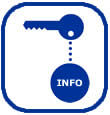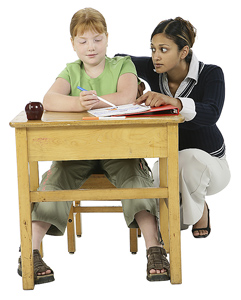 Three-Part Confrontation Message
Three-Part Confrontation Message
 The Confrontation Message consists of three parts and clearly states your needs to the student. This statement will be your security blanket during the confrontation — the main tool you will rely on and return to again and again.
The Confrontation Message consists of three parts and clearly states your needs to the student. This statement will be your security blanket during the confrontation — the main tool you will rely on and return to again and again.
Your Confrontation Message must be prepared ahead of time. You need to memorize it so you can say it and repeat it clearly, cleanly, and without reading or pausing to think. Remember: Thinking during a confrontation is not the easiest thing to do. Do your thinking ahead of time. Have your message ready!
The Three-Part Confrontation Message will be your security blanket during the confrontation meeting. It must be prepared ahead of time and memorized.
The three parts of the message are stated in a single sentence. These parts are listed below.
Examples:
“Megan, when you chew gum, I feel frustrated because it distracts me from my lesson and I am not able to be the teacher I’d like to be.”
“Arturo, when you show up for group work without your materials, I feel irritated because it holds the entire group back.”
“Marcina, when you fight on the bus and get suspended, I feel angry because it takes extra work on my part to get you caught up.”
Part 1. When you [state a specific behavior].
Examples:
- When you chew gum . . .
- When you show up late for class . . .
- When you come to class without materials . . .
- When you talk out in class without raising your hand . . .
- When you interrupt another student who is talking . . .
Keep in mind: Focus on a specific behavior, not a judgment or inference.
| Inference | Behavior |
| Rude | Talking when others are talking |
| Bored | Sitting and staring out the window |
| Wasting time | Not working at assigned times |
| Bullying | Poking classmates |
| Disrespectful | Using put-downs |
| Cheating | Looking at another's paper |
Part 2. I feel [state your feeling in one word].
Examples:
- I feel frustrated.
- I feel irritated.
- I feel angry.
- I feel annoyed.
Keep in mind: Focus on a feeling. “I feel that…” or “I think that…” is a thought, not a feeling.
Part 3. Because [state your reason].
This reason tells the effect the student’s behavior has on you, the class, and/or the school. Do not state the effect it will have on the student being confronted because you need to be taking responsibility for the problem. Focus on yourself or others when stating the effect. Consider how this student’s behavior affects you or your class in terms of time, money, productivity, performance, safety, damage, waste, etc. The effect can be on both the teacher and the class, but not on the student being confronted.
The reason why you state the effect the student’s behavior has on you or on the class is that you want to convey ownership of the problem: You have a problem and we want the student’s help in solving it.
Examples:
Effect on the Teacher
- Because I have to stay later to help you.
- Because it takes extra work on my part to get you caught up.
- Because other teachers will think I don’t enforce the rules.
- Because I’m not able to concentrate.
- Because it violates my space.
- Because I’m exhausted handling these situations.
- Because it’s harder for me to maintain my positive outlook.
Effect on the Class or School
- Because the school doesn’t have money to replace the equipment.
- Because it makes our class look disrespectful.
- Because it holds the entire group back.
- Because everyone in the class (including me) loses our concentration.
- Because other students are distracted.
Do not use these types of statements that make it the student’s problem:
- Because it will hurt your grade.
- Because you’re likely to get beat up someday.
- Because then you won’t know it in high school.
- Because you won’t be able to get a well-paying job.
- Because you won’t have any friends.
More Key Information
